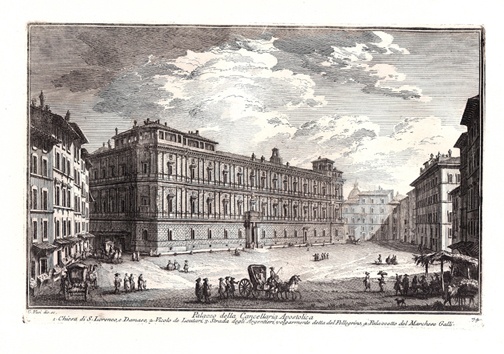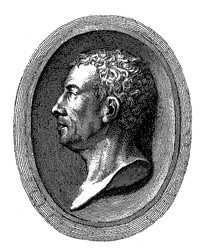Palazzo Cancelleria, sogenannt, da er von 1517-1973 die Camera Apostolica beherbergte, gehört zu den bedeutendsten Baudenkmälern der Frührenaissance in Rom. Er wurde von einem unbekannten Architekten zwischen 1489-1496 für Kardinal Raffaele Riario-Sansoni (1460-1521) erbaut. In der neueren Forschung wird der Bau auch Baccio Pontelli (1450-1492) oder Giuliano da Sangallo (1445-1516) zugeschrieben.
Bezeichnet: Palazzo della Cancellaria Apostolica
u.l.: G. Vasi dis. sc.
Publiziert: Vasi, Delle magnificence di Roma antica e moderna, Lib.X Rom 1747-1761 Taf. 74
en

